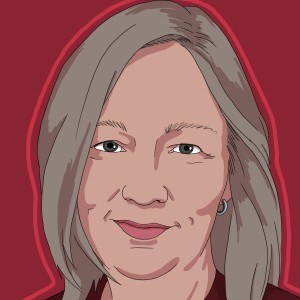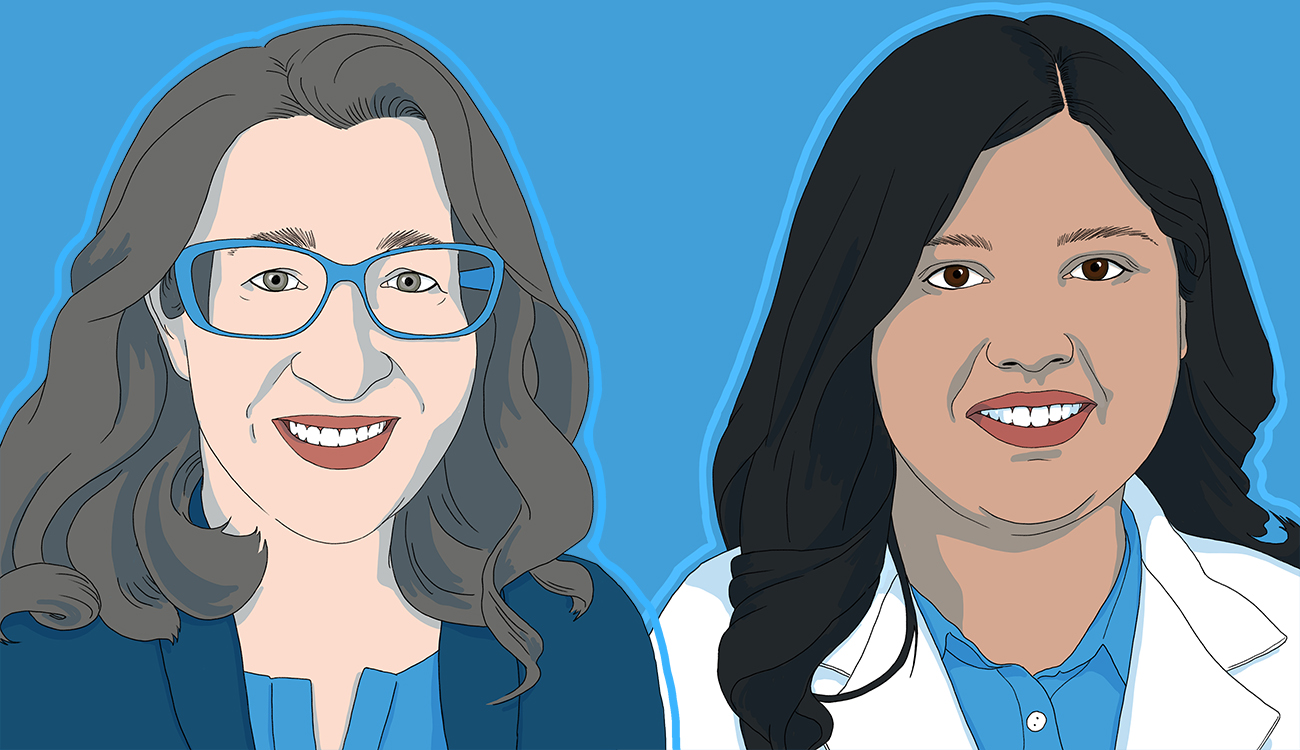
Judy joined RFU in 2014 after nearly 20 years as a newspaper reporter. She likes reading about artists and scientists and hiking with her kids and grandkids.
Author Page
Collaborating to improve diabetes care
Illustrations by Michelle KondrichSocial epidemiologist Amanda Simanek, PhD, MPH, founding director of the university’s Michael Reese Foundation Center for Health Equity Research, mentored podiatric medical student Ayesha Arif, MS, SCPM ’27, whose work was supported by a Scholl College NIH research training grant. Ms. Arif looked at the accessibility of healthcare providers who treat diabetes to explain why diabetes rates differ by race and ethnicity in neighborhoods in Lake County, Illinois. Here, they discuss their collaboration.
Amanda Simanek: Ayesha, I don’t know if you knew exactly what you were getting into with this project. But you rose to the challenge of using publicly available data in a way that no one else had before by geocoding provider locations and classifying them based on the scope of diabetes services they provide. We know that, in some census tracts, 80% to 90% of people have diabetes. That’s incredibly inequitable.
Ayesha Arif: The beginning of our project was a little bumpy for me. I had no background in research or data analysis. It became a valuable learning opportunity.
AS: We would have struggled to undertake this project without your help. We relied on your expertise to classify providers, and now we have that as a data resource in our center.
AA: As a podiatry student, I never expected to learn software or geocoding. I am grateful I did. I presented my research at the American Public Health Association. You helped me practice and eased my nerves for a 10-minute presentation that felt like two hours!
AS: I remember being a student and feeling super-nervous and worried about taking on new things for the first time. It’s helpful to understand it’s not just that you have to talk for 10 minutes, but that there is some very specific information to convey during a presentation.
AA: My research revealed a higher density of diabetes caregivers in southern Lake County, which has a higher socioeconomic base, compared with northern Lake County. There’s so much public data related to diabetes that can be used to create more equitable outcomes. I hope to do that.